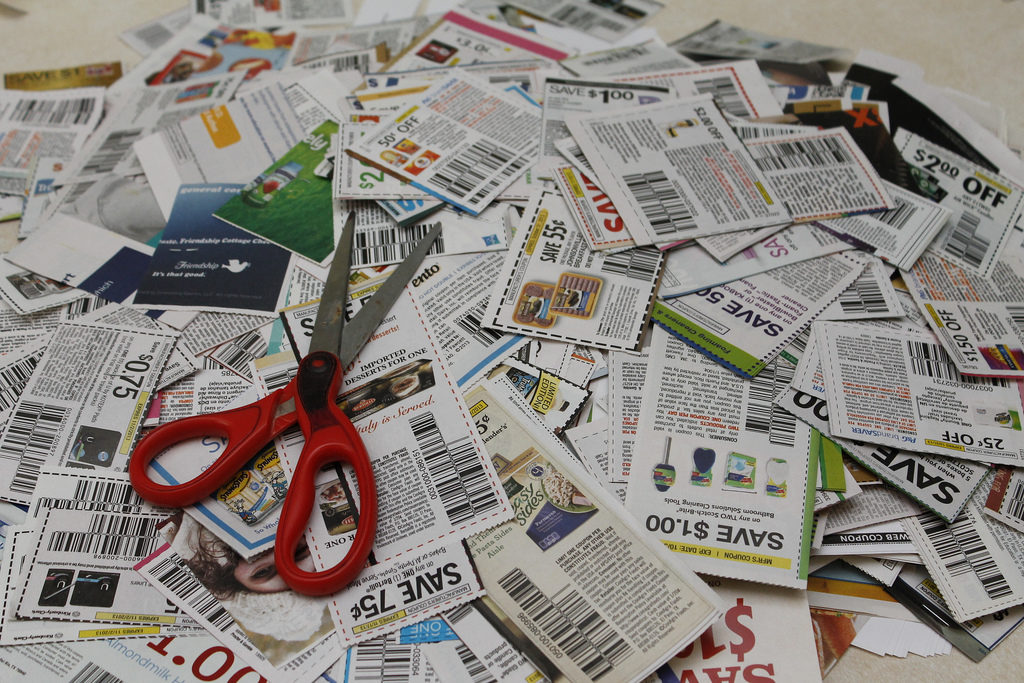It’s a question many in the industry have asked, and maybe you’ve asked yourself too – why, in this day and age, do retailers still have to stuff your paper coupons into envelopes, ship them off to a coupon processor, who trucks them across the border to Mexico to be sorted and counted by machine and by hand, so the retailers can eventually be reimbursed, and the coupon processor can collect a handling fee for its services?
There has to be a better way. That’s what two major coupon providers believe, as they lay the groundwork for a much more modern, streamlined system that could save manufacturers money, potentially free up more funds that could be redirected toward offering better and more valuable coupons, and put those coupon-counting facilities out of business.
The technology has been there, to automate and simplify the current, arguably antiquated system. But that technology generally has been pushed by third-party industry players, who have been trying to get manufacturers and retailers on board. The idea involves validating coupons right at the checkout – a cashier scans your coupon, it’s recorded in a central database, and a credit is automatically issued to the retailer on behalf of the manufacturer that issued the coupon. No trip to Mexico, no handling fees and no headaches. So stores and cashiers who sometimes seem put off about having to take your coupons, might actually be happy to do so again!
But it’s not easy getting the entire industry to agree on one solution. So now two major coupon providers – Procter & Gamble and Coupons.com owner Quotient Technology – are each coming up with their own.
In an apparent coincidental convergence of concepts, the two companies have each submitted a patent application describing similar processes, filed on the very same day. Procter & Gamble isn’t discussing its newly-published idea publicly, while Quotient is already moving forward with its plan.
Quotient’s proposal is called “Multi-Axis Blockchain Clearance of Offers.” It describes a digital ledger of transactions accessible by both retailers and manufacturers, which record the real-time use of coupons at the checkout. “Today, proxy companies are used to provide scanning, auditing, and negotiations between retailers and consumer packaged goods manufacturers,” the patent application states. “This relationship model is a legacy of two eras: paper coupons and centralized systems.” In Quotient’s system, “by ensuring all parties have equal information,” the application explains, “the overhead in managing redemptions is reduced or even eliminated.”
Quotient CEO Steven Boal put it more directly, in an article he wrote a few years ago. “It’s time to cut out the middleman,” he declared, especially when it comes to digital coupons that don’t require the same type of handling that paper coupons do. “We’re getting to the point where it makes financial sense to cut them out of the digital coupon ecosystem, turning those unnecessary fees into working dollars” that manufacturers can redeploy toward other expenditures – like more and better promotions and coupons.
With Boal’s vision in place and the patent application written up, Quotient over the summer went ahead and announced the launch of a new effort to “disrupt the legacy coupon clearing industry,” by offering to process manufacturer’s coupons at a “significant cost savings.” Legacy coupon processors “emerged for a good reason: to serve as the trusted middle party,” Boal said in a statement. But given the advent of digital coupons and new technologies like blockchain, “coupon clearinghouses have done little to evolve.”
Quotient, though, is essentially asking manufacturers to switch from one middleman to another less-expensive middleman. Procter & Gamble is looking to bypass the middleman altogether.
P&G’s mouthful of a patent application is called “System and Method Including a Distributed Ledger Data Structure for Authenticating and Clearing Coupons.” It, too, describes the use of blockchain technology to authenticate and clear coupons right at the register. The current system of transporting and counting paper coupons is “highly resource and process intensive,” is “prone to human error” and “costs manufacturers millions of dollars per year,” P&G’s application reads. The company says its system “reduces the need for third party clearing houses,” and “provides a trusted system that is transparent to retailers and manufacturers.”
As one of the world’s largest consumer products companies, anything P&G does is likely to be watched closely in the industry. Until recently, P&G was the only manufacturer to regularly issue its very own coupon insert. And until a few years ago, it was the only manufacturer to process and settle its own coupons without going through a third-party clearinghouse. And if P&G turns the idea described in its patent application into reality, it could very well go its own way again.
With the money it saves, then, P&G just might be able to offer coupons more valuable than 25 cents off toilet paper or paper towels!
Just because the technology exists in patentable form, though, doesn’t mean there aren’t kinks to work out. The big question is what happens to paper coupons after they’re scanned and after the retailer has been credited with their value? Will manufacturers trust all retailers to discard redeemed coupons so they can’t be used again? Will retailers trust all manufacturers to reimburse them accurately, if they don’t have the physical coupons anymore as proof they were accepted at the checkout?
Centralized coupon clearinghouses responsible for collecting paper coupons to count by hand, first emerged back in the 1950’s. So it may seem like an antiquated, outdated system – but then you could say the same about cutting out little scraps of paper from the Sunday newspaper in order to save money.
So as long as there are still paper coupons to process, there are good reasons the clearinghouses are still around some seven decades later. But times and technology are changing, and as these latest patent applications indicate, some industry players are determined to ensure that coupons are brought into the future – ready or not.













If coupons end up being processed using block-chain tech in real time I can see how this can be used to dramatically limit coupon fraud as well. Every paper insert coupon gets a unique serial # (like most internet-printed coupons do now); that unique # is part of the block chain; and when the 1st instance of that unique serial # is processed, it makes that serial # unusable for anything after that — trying to use, say, a photocopy of the coupon would generate a fraud alert on attempted use.